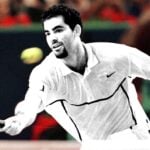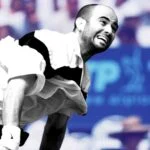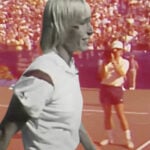Tennis in Algeria: who leads today and why
Enter one of the local clubs in Algiers on a summer evening, and the tennis balls pop louder than you would imagine. Tennis in Algeria is no longer an elite sport, but it is available, tough, and authentic. A new generation is taking up rackets, and it is not due to big money, but they … Continued

Enter one of the local clubs in Algiers on a summer evening, and the tennis balls pop louder than you would imagine. Tennis in Algeria is no longer an elite sport, but it is available, tough, and authentic. A new generation is taking up rackets, and it is not due to big money, but they believe in the grind. Such names as Ibbou and Sahtali are no longer a secret–they are points of departure. Algerian tennis may not be the front page news of the world, but somewhere out there on the red clay and the dying courts, something is cooking.
The Growth of Tennis Infrastructure
The development of tennis in Algeria did not begin with massive stadiums and million-dollar paid sponsors. It started when the owners of the clubs turned the fields that were not used into courts, and coaches trained the children without charging them. Platforms like bet tunisie have also made it easier for youth to follow tournaments, odds, and global matches right from their phones. Tennis is starting to take over weekend routines in cities like Constantine and Tlemcen. Many young people now seek a sport beyond football.
The finances of the government are still tight, and the private schools have come to fill in the gap. Junior tournaments and summer camps are now organized in institutions such as the Tennis Club d’Hydra, which makes children want to stay in the game. It is not ideal yet, but it is a start, and at least Algeria is now establishing a foundation as compared to five years ago.
The Role of International Exposure
The world experience is moulding the best players in Algeria, both on and out of the court. The game is changing due to exposure to improved facilities and improved competition.
This is the way it leaves an impression:
- Off-season training: During the off-season, players such as Ibbou train in Spain and France.
- Junior circuit events: Young Algerians are playing in ITF events in Africa and Europe.
- Global coaching networks: There are former ATP professionals who mentor some of the best juniors.
- International sponsors: Some emerging talents are now sporting international brands courtesy of international tournaments.
This exposure not only increases performance, but it also changes ambition. Children dream bigger now since they have seen what can be done.
Today’s Top Algerian Tennis Players
The space at the top of the Algerian tennis has not been left in a vacuum anymore- there is a filling process, gradually but with a roar. The talent is young, tough, and fearless. You can see it in their footwork and their social media and their second-set stubbornness. It is not a generation that lives on legacy, but it creates it swing by swing. Ines Ibbou has made the way, but now she has been accompanied by new names, particularly on the men’s side. A depth is taking shape. And it is not only about rankings. It is not who trains, who travels, who is still there when the rest is gone.
Inès Ibbou’s Consistent Rise
Ines Ibbou did not come out of a vacuum. Her ascent was low-key, the result of grinding qualifying matches and frosty mornings before early-morning flights. She has been the best-ranked female player in Algeria over the years, and not through flair but through consistency. She is tough as nails in rallies, is accurate with her movement, and does not scare when facing more established names.
Likewise, she is as vocal off-court as well. In 2020, Ibbou became viral following an open letter to Dominic Thiem, which he wrote on behalf of the tennis elite to assist lower-ranked players. The same fire drives her on stage. She trains largely outside the country, but each victory is a win for Algeria. She is not a hype. It is a matter of standing in line when the others do not.
Emerging Male Talent – Toufik Sahtali
Toufik Sahtali is not yet making the headlines of the ATP, but the insiders are taking notice. He is in a new category of male players who are gradually improving.
Here is why Sahtali is special:
- Aggressive baseline play: He does not hesitate to take control of the rallies in the backcourt.
- Tournament hustle: Plays regularly in ITF Futures in North Africa and the Mediterranean.
- Mental toughness: Famous for victory in a comeback in case of losing the first set.
- Youthful asset: Not yet 22, and still time to scale and to learn.
Sahtali is not a headline, he is a builder–not yet. And the close observers are aware that his game has gears to shift.
Support from the Algerian Tennis Federation
The Algerian Tennis Federation (FAT) has come to the fore, not very fast, but with a visible presence. It does not play a glamorous role, but one that is fundamental. Whether a young player makes it or burns out early can be determined by the Federation through its junior programs to international funding. So here is what that support system is in action.
| Program/Initiative | Description | Impact on Players |
| National Elite Training Camps | Intensive monthly sessions at the national centre in Algiers for U14–U18 athletes | Encourages discipline, fosters national-level unity, and prepares players for international formats |
| International Travel Grants | Subsidies for airfare, visas, and lodging for ITF Junior Circuit events in Africa and Europe | Opens doors to global competition and ranking points, especially for less affluent families |
| Equipment & Apparel Partnerships | Deals with international brands to supply racquets, shoes, and apparel for top juniors | Levels the playing field—players can train and compete with high-quality, durable gear |
| Coaching Certification & Exchange | Annual certification courses plus short-term coaching exchanges with France and Spain | Modernizes training methods and introduces global best practices across regional clubs |
Algerian tennis won’t grow by talent alone. Infrastructure, no matter how modest, plays a huge part in shaping results and ambition.
The Challenges Ahead
Talent is not enough to repair the damage. Most of the local clubs are not modernized, and some do not have courts at all. It is difficult to be noticed by young players in smaller cities. The majority of the opportunities are concentrated on the key hubs such as Algiers or Oran. That gap continues expanding without a broader national network.
Next is the financial problem. Tennis does not come cheap. Travelling abroad, coaching, rackets, etc., it all adds up quickly. The families have to decide between education and tournaments. And FAT helps, but it is not sufficient yet. The pipeline should be truly reinforced in case Algeria wants to have champions in international courts. It is not only promises, but also resources, visibility, and equality in all regions.
Why the Next Few Years Matter Most
Algerian tennis is in a dilemma. The momentum is there, but it is weak. Ines Ibbou cannot do it on her own, and the future generation is observing. Raw talent can become a future star with investment in infrastructure and regular support. Otherwise, the time might be missed. Some younger talents, such as 17-year-old Salma Djoubr, are already creating a stir in the region, yet without consistent support, their ascent may be short-lived. In Algiers, there are currently private schools that are being opened, but they are still not accessible to everyone. It is the window of opportunity when the right decisions can make or break the decades of competitive tennis in the country.









